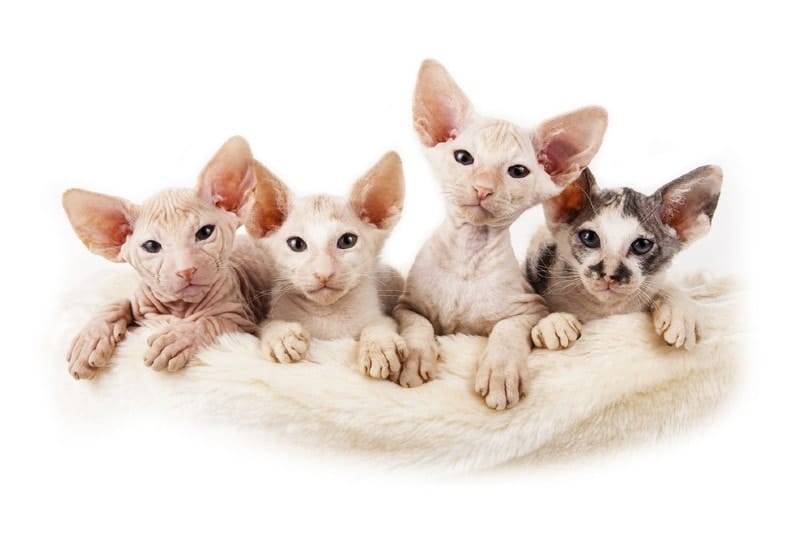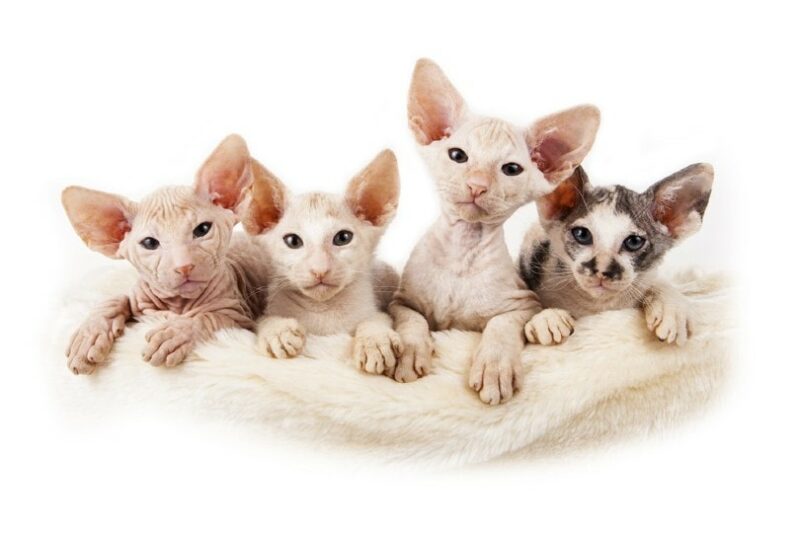Catster advocates for adopting before shopping, though we fully understand there are many reasons for seeking a breeder. So, we encourage it to be done the right way. We have not personally visited or investigated all of the breeders below. We have put the top-recommended all in one place for you to get in touch and make the best decision for you. Learn more about our stance and how to choose the right breeder here.
The Sphynx is easily one of the best-recognized cat breeds in the world. Due to their soft, hairless bodies, large ears, and outgoing personalities, these cats are one of a kind. They also have unique requirements, so they need a particular type of home. If you’re ready to add a sweet Sphynx to your family, we rounded up all the information that you need to know about Sphynx kittens for sale in the U.K.
Sphynx Breeders in the U.K.

Don’t be tempted to rush out and buy the first Sphynx kitten you see advertised. Instead, spend a little time checking out each breeder’s reputation. Asking about health conditions, personality traits, and any advice the breeder may have for potential new owners is a great place to start.
Check out our list of Sphynx breeders in the U.K., and start researching!
Sphynx breeders near me
The Sphynx Cat Club is the longest-running breed club in the U.K. and holds a list of experienced and ethical breeders registered with the club.
Sphynx breeders that ship
If you’re happy to look nationwide for your new kitten, some of the breeders on the Pets4homes site should be able to ship your new kitten to you.
Sphynx rescue
The Sphynx Cat Association and The Sphynx Cat Club both help rehome cats and kittens in need.
Breeders registered with the GCCF
The Governing Council of the Cat Fancy (GCCF) lists Sphynx breeders registered with them.
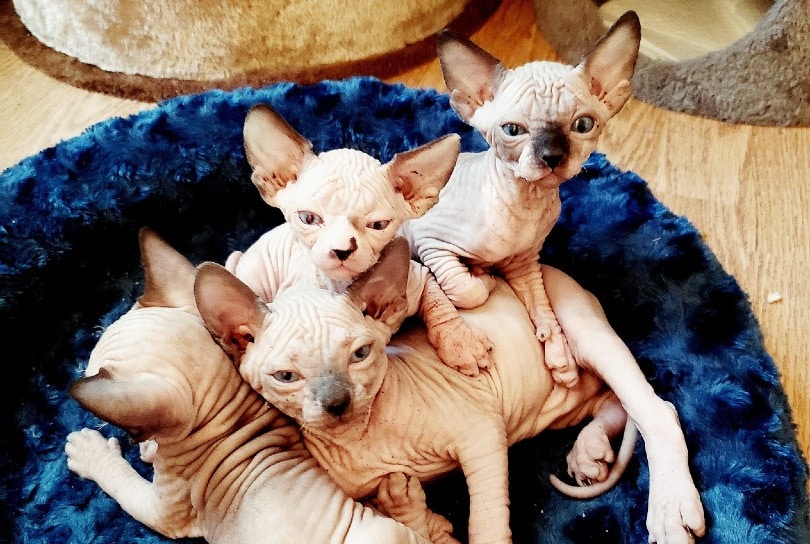
How Much Does a Sphynx Cost?
In the U.K., Sphynx kittens usually cost between £800 and £2,000. For a kitten from show lines, you could end up paying even more than that. The Spynx might be expensive, but there are plenty of families willing to pay the high price of these kittens, making them the 7th most popular breed in the U.K.
That means you may have to wait for a kitten to become available. Some colors of Sphynx kittens may also be more expensive than others, so be sure to ask breeders whether they have kittens at different prices. Breeding healthy Sphynx kittens not only takes a long time but also requires a great deal of expertise and money.
- New owner information packs
- Veterinary checks
- Registration with a breed association
- Food
- Wormers, flea treatments, and other medications
- Health tests for parent cats and kittens
- Vaccinations
- Kitten supplies
Once you realize how much money and time is invested in each kitten, the price of a Sphynx kitten doesn’t look like that much! Remember that the costs of keeping your new cat for their lifetime will end up costing more than the initial price that you pay for your kitten.
Things to Ask a Sphynx Breeder
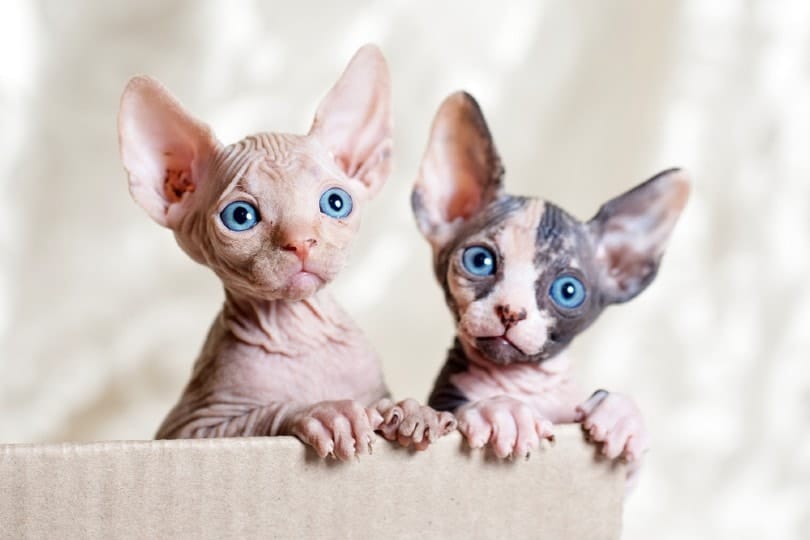
One of the first things that you should do when you decide to buy a Sphynx kitten is to research any breeders that you’ve found to make sure they’re reputable and can prove a history of breeding healthy kittens with excellent temperaments.
Breeders of purebred Sphynx kittens usually have to abide by a Code of Ethics, like this one for the Governing Council of the Cat Fancy. The first questions you should ask a breeder are which code of ethics they use and if they can send you a copy, as well as proof of their registration with a breed organization.
It’s also a good idea to visit a breeder’s facilities and meet both parent cats when meeting the kittens. Meeting the parent cats will give you a better idea of what kind of temperament the kittens will have when they grow up, and it’s also a good way to check that the facilities are clean and the cats appear well cared for.
Sphynx breeders should also be happy to provide proof of health checks that the parent cats have had, as well as details of any that they’re planning to carry out on the kittens. Sphynx cats can suffer from a range of health problems, including severe conditions like mitral valve dysplasia, hypertrophic cardiomyopathy, and congenital myasthenic syndrome.
They can also suffer from minor issues, like skin allergies, fungal infections, and allergies. Any breeder should talk you through these so you can be sure you can provide any vet treatment that your kitten may need in the future. Beware of any Sphynx breeder advertising them as a hypoallergenic breed since that isn’t always the case.
4 Things to Know Before Buying a Sphynx
1. Sphynx Cats Aren’t Hypoallergenic
Proteins in the skin, urine, and saliva of cats cause cat allergies. Sphynx cats aren’t necessarily a better choice for allergy sufferers.
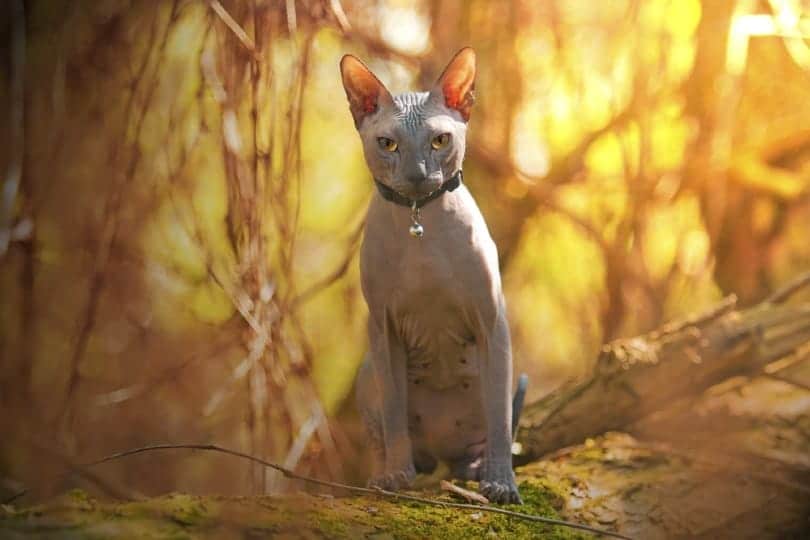
2. Sphynx Cats Aren’t Completely Hairless
They might look bald, but take a closer look, and you’ll see that a Sphynx cat’s body is covered in very soft and fine fur, which feels like suede when you stroke them. What they do lack are whiskers and eyelashes.
3. Sphynx Cats Should Live Indoors
Sphynx cats can’t regulate their body temperature as well as most cats with a full and fluffy coat, so they can quickly feel the effects of harsh weather. Even a cool day can make them feel uncomfortably cold. They’re also prone to sunburn, so they should never be allowed to lie in direct sunlight.
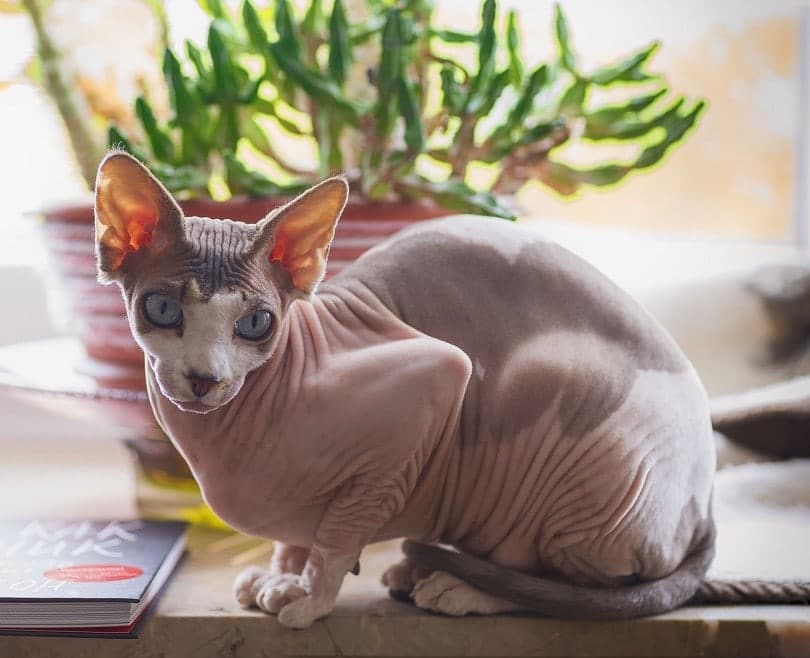
4. They Need a Great Deal of Attention
Sphynx cats crave companionship, and they won’t enjoy being left at home on their own all day. They need a household where people will be home as much as possible. It’s also a good idea to keep them with other pets for company.
Conclusion
Sphynx cats have a dedicated following of loyal fans who love the intelligent and affectionate breed. Their almost hairless bodies, playful natures, and sweet personalities have made them the 7th most popular purebred cat in the U.K. As a result of their popularity, they’re also expensive, and you should budget for around £800 to £2,000 or more for your new kitten. Some breeders will take reservations for litters yet to be born, but you may need to pay a deposit.
Follow our advice for finding a reputable breeder, and your new kitten will be in their forever home before you know it.
Featured Image Credit: ANCH, Shutterstock

